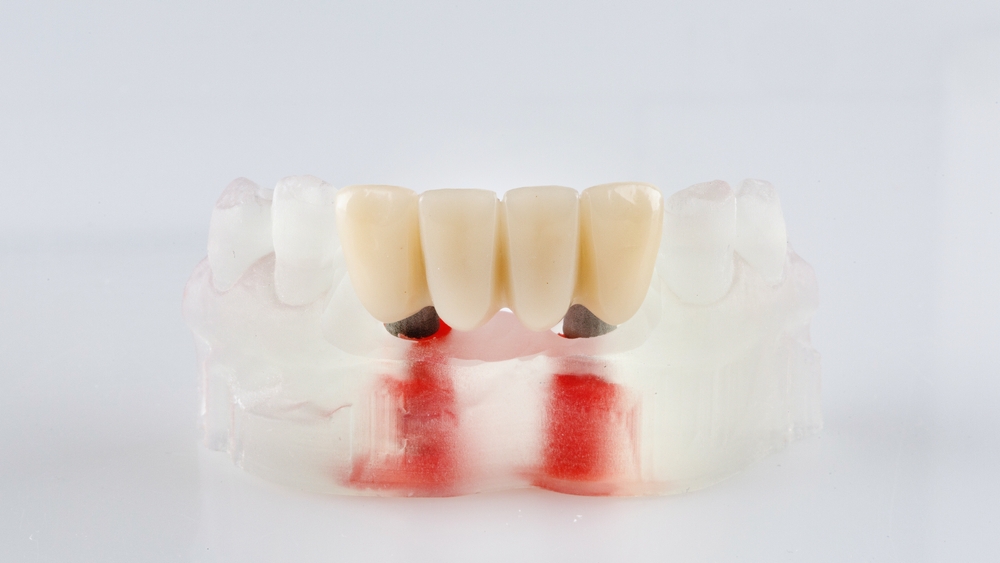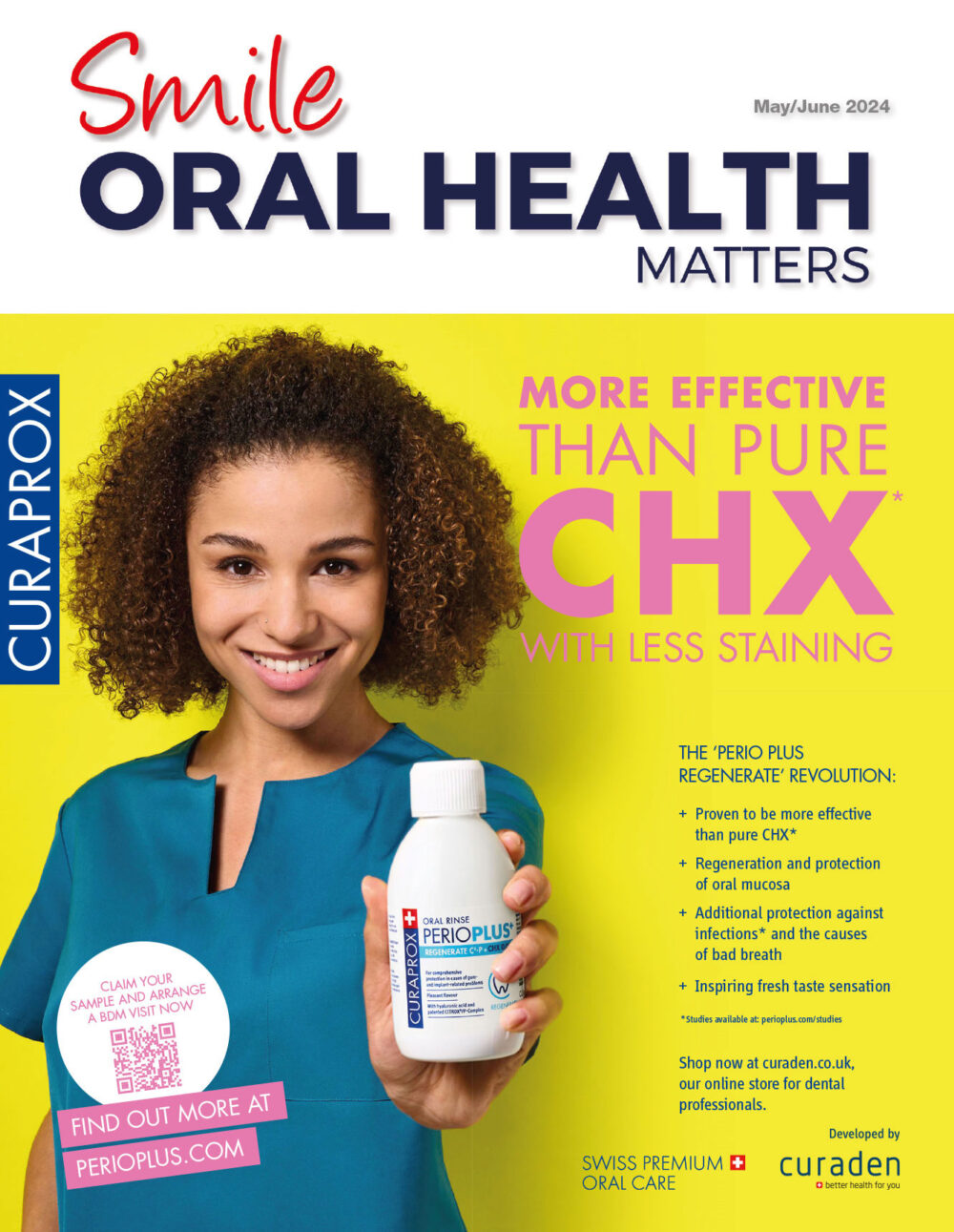 Restorative treatments vary in complexity and can take numerous appointments between the initial plan to the final smile. This amount of time, and the nature of the treatment, can mean there are many factors that can contribute to restoration failure, from delayed wound healing to infection.
Restorative treatments vary in complexity and can take numerous appointments between the initial plan to the final smile. This amount of time, and the nature of the treatment, can mean there are many factors that can contribute to restoration failure, from delayed wound healing to infection.
For permanent dental crown treatments, temporary crowns are placed in the short term to maintain the patient’s oral function, aesthetics, phonation and occlusal relationship, supporting the success of the treatment. Dental practitioners must tailor their precautions and approaches so that the temporary crown lasts, significantly reducing the risk of treatment failure. Navigating the factors for crown failure also relies on the patient’s help, with education on these factors being vital for them to understand.
Alert to allergies
Temporary crowns provide continuity for the gingival tissues and accelerate the healing of damaged gingival tissues from the tooth preparation.[i] However, material selection is pivotal to avoid complications. Allergic reactions to crown materials are not common, but inflammation and burning sensations can be caused by acrylic resins.[ii] For patients, gingival inflammation or irritation may be observed at the temporary crown margins in the days after placement – practitioners should encourage patients to monitor these changes and, if the discomfort continues, schedule another appointment.[iii] Clinicians can also suggest patch tests to check for reactions or, for individuals who have previously had a reaction to a temporary crown, use a non-metallic or hypoallergic material.
Succeed with digital
Digital dental technologies have transformed temporary crown treatments, providing enhanced precision for optimal placement. Furthermore, digital visualisations of restorations can be crucial aides for the patient’s understanding and setting realistic expectations, illustrating the treatment process for enhanced engagement. For the maintenance of the temporary crown, digital treatment plans can foster a sense of confidence for the patient, with the practitioner able to highlight the areas that will be monitored for infection, unstable mechanical forces or allergic reactions.[iv]
Patient preparation
Once the temporary crown is placed, practitioners must ensure its success through patient education; when the individual leaves the practice the crown is in their care. There are several pitfalls that need to be circumvented to avoid breaking the temporary crown.

It should be recommended for patients to avoid chewing hard and sticky foods on the side of the temporary crown, minimising the risk of damage. This includes crusty bread, tough meats, raw vegetables and caramel.[v] As this must be adhered to for a minimum of 2-3 weeks, it is easy for patients to forget. Practitioners should encourage patients to use daily reminders, such a post-it note on a lunchbox, to avoid chewing on the crown.
Some patients may also worry that as temporary crowns are glued with an easy-to-remove adhesive, the action of toothbrushing may damage or dislodge it. Practitioners should reiterate that brushing is imperative to prevent bacterial infection at the treatment site, but a gentle approach will be ideal. Whilst a cavity is unlikely to develop in the few weeks of having a temporary crown, gently brushing and flossing around the treated tooth reduces the risk of pathogens or trapped food particles attacking the treated tooth or those adjacent to it.[vi] Infection can cause pain, swelling, tenderness, halitosis, bad breath and pus to discharge, impacting quality of life.[vii] Single tufted toothbrushes are an excellent solution, offering greater control and cleaning power than traditional toothbrushes, whilst still remaining gentle.
Grinding to a halt
Another factor for patients to control is bruxism; grinding exerts pressure on the temporary crown and can damage or dislodge it. For those who are conscious of their grinding habits during the day, practitioners should suggest a number of options, such as avoiding hard or chewy foods (especially chewing gum) and practicing relaxation techniques. For sleep bruxers, mouthguards can take the pressure off the teeth, protecting the temporary crown.[viii] In the event of a dislodged temporary crown, patients should be informed that they can try and slide it back into place.[ix]
For practitioners who may worry about temporary crown success, and many other restorative anxieties, the Bulletproof Dentistry Course from the IAS Academy provides reliable and repeatable solutions. Powered by the expertise of Dr Jaz Gulati and Dr Mahmoud Ibrahim, the course obliterates the confusion around occlusion, offering a comprehensive understanding of how the teeth interact. This ensures that restorative treatments can be delivered with masterful techniques for long-term success. The two-day course empowers practitioners, giving them greater confidence with their restorations for long-lasting patient satisfaction and wellbeing.
By pre-empting potential complications for temporary crowns, and educating patients on how they can manage them at home, dental practitioners can avoid the pitfalls of treatment failure with their restorations, leading to outstanding functional and aesthetic results.
For more information on upcoming IAS Academy training courses, please visit www.iasortho.com or call 01932 336470 (Press 1)
Author:
Dr Tif Qureshi founder and a clinical director of IAS Academy
[i] Tüfekçi, B.B. and Yeşil, Z. (2024). Examination of the effect of aging process on marginal fit and fracture strength of temporary crowns prepared from different materials. Heliyon, [online] 10(6), p.e26737. doi:https://doi.org/10.1016/j.heliyon.2024.e26737.
[ii] Mesquita, Alfredo & Silva, Juliano & Kojima, Alberto Noriyuki & Moura, Renata & Giovani, Elcio & Özcan, Mutlu. (2017). Allergic reaction to acrylic resin in a patient with a provisional crown: Case report. Brazilian Dental Science. 20. 115. 10.14295/bds.2017.v20i1.1303. Accessed via: https://www.researchgate.net/publication/315988398_Allergic_reaction_to_acrylic_resin_in_a_patient_with_a_provisional_crown_Case_report
[iii] Shenoy, A., Maiti, S. and Nallaswamy, D. (2024). Comparative Analysis of Periodontal Parameters and Patient Satisfaction Utilising Different Temporary Crown Fabrication Techniques: A Parallel-Group Randomised Controlled Trial. Cureus. doi:https://doi.org/10.7759/cureus.56977.
[iv] Shenoy, A., Maiti, S. and Nallaswamy, D. (2024). Comparative Analysis of Periodontal Parameters and Patient Satisfaction Utilising Different Temporary Crown Fabrication Techniques: A Parallel-Group Randomised Controlled Trial. Cureus. doi:https://doi.org/10.7759/cureus.56977.
[v] Hecht, M. (2019). How to Care for a Temporary Crown. [online] Healthline. Available at: https://www.healthline.com/health/how-to-care-for-a-temporary-crown#if-it-comes-loose [Accessed 28 Feb. 2025].
[vi] Yetman, D. (2021). What to Do If Your Temporary Dental Crown Hurts. [online] Healthline. Available at: https://www.healthline.com/health/dental-and-oral-health/temporary-crown-pain#treatment [Accessed 28 Feb. 2025].
[vii] Yetman, D. (2021). What to Do If Your Temporary Dental Crown Hurts. [online] Healthline. Available at: https://www.healthline.com/health/dental-and-oral-health/temporary-crown-pain#treatment [Accessed 28 Feb. 2025].
[viii] Yetman, D. (2021). What to Do If Your Temporary Dental Crown Hurts. [online] Healthline. Available at: https://www.healthline.com/health/dental-and-oral-health/temporary-crown-pain#treatment [Accessed 28 Feb. 2025].
[ix] Tüfekçi, B.B. and Yeşil, Z. (2024). Examination of the effect of aging process on marginal fit and fracture strength of temporary crowns prepared from different materials. Heliyon, [online] 10(6), p.e26737. doi:https://doi.org/10.1016/j.heliyon.2024.e26737.













